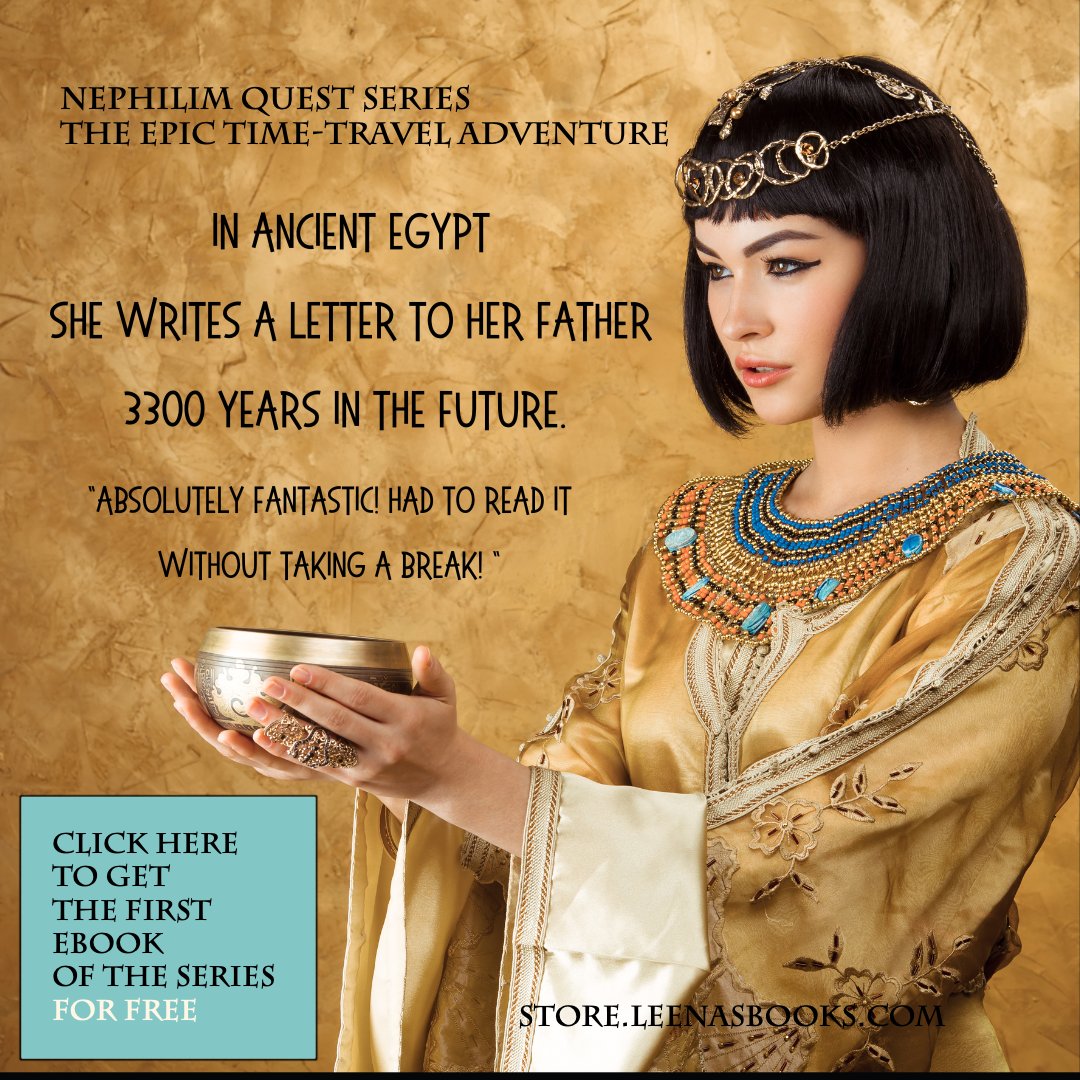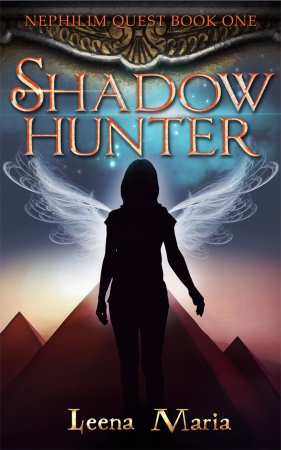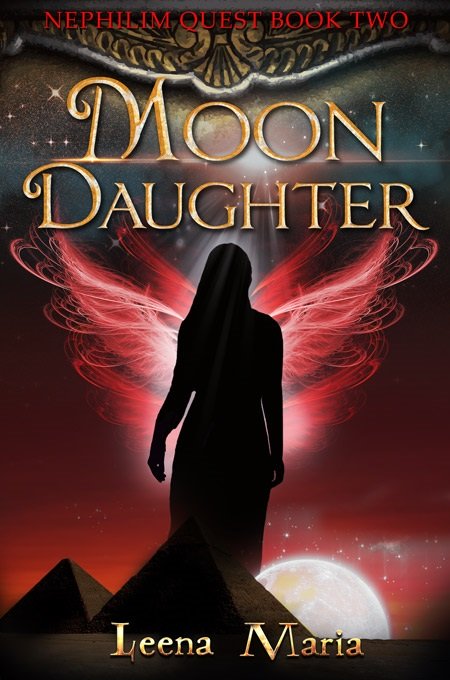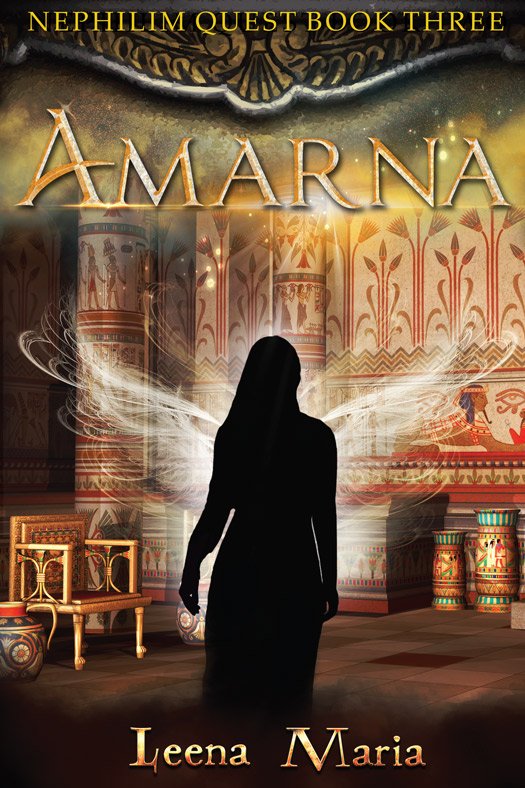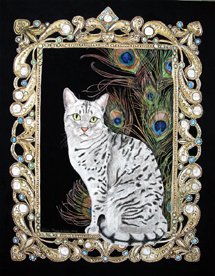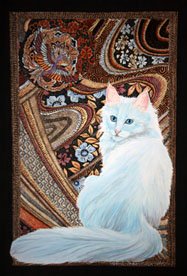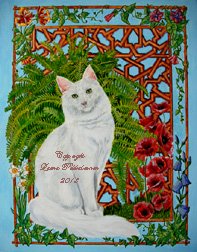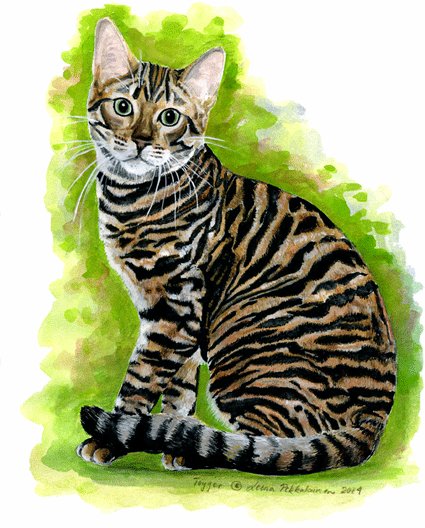Cat Angels
Susan Graham
I "met" one of the real life cat angels, Susan Graham, when I asked if the Atlanta Abyssinian Rescue's information could be added to cat-breeds-info.com rescue shelter pages.
|
On her Atlanta Abyssinian Rescue's page was also mention of Second Chance Charlie - a black and white tuxedo cat which some cruel person had used as target for archery practice. I asked Susan, if I might add Charlie to the "Famous Cats" section and she gave permission. While we corresponded,it became evident Susan is very knowledgeable about cats and cat rescue and so I asked if she would also agree to an interview. This interview concentrates on the rescue work. |
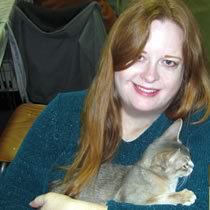 |
If you wish to check out Atlanta Abyssinian Rescue, click here. Susan also breeds beautiful Abys at Aksum Abyssinian cattery.
1. Susan, you have been working on cat rescue in the Atlanta area for quite a while already. How and when did you start this line of work?
I like to think of it as part of my contribution to making the world a better place, charity work, a passion, a hobby, all of the above. I really don't think of it as work at all. I love cats and I've always been good with them. :-) I started helping with rescue and adoptions in 1984 and have done as much as I could ever since, pacing myself so I can keep doing it, only doing what I was able so I didn't burn out.
2. You specialize in re-homing and rescuing Abyssinian cats - how did your love for the breed start?
In 1985 when I started breeding and showing cats as a hobby, I had a lilac point Siamese that I championed in CFA. While at the shows, I saw and instantly fell in love with Abyssinians. I talked with Aby breeders and the problems from the Feline Leukemia epidemic of the 70's were still having an effect (small litters, poor health), so I decided to wait until I had more experience and could do right by the breed.
I have worked with 7 different breeds including Abys since then, off and on, for a total of about 8 years now. I started breeding and showing Abys after having two of them as pets in late 2007.
In 2009 I felt I understood the breed well enough through experience and learning that I could successfully rescue them personally, so I started doing just that. After I had rescued a few of them, I asked my vet for a letter of recommendation so I could have a Petfinder.com official rescue and get the word out to more people about available Abys.
3. What is your typical rescue case?
There really isn't a typical rescue case. They are all different, with one thing in common, they need a new home. I have taken one that was left in front of a local pet store with a note about the owners losing their home and not being able to take the cat, one from a kill shelter in Miami that a friend helped me spring and ship up to me, one from a couple who were both called into service in the military and had to downsize their pets as a result, etc., etc.
4. What is your most memorable rescue case?
Two come to mind.
The Abyssinian female in the infamous Miami kill shelter was quite an undertaking. My friend in Florida knew a shelter worker there and was able to keep her from being killed while she worked out how to get to her and officially adopt her.
Then flying her up to Atlanta via Continental was quite the experience as well, with my friend getting up in the wee hours to drive her there, being forced to buy a larger carrier (the other one was fine, they just do that sometimes), and the cat herself flown from Miami to Texas and then to Atlanta (the route Continental takes to get to Atlanta from Miami, no direct flights). She was so sweet and affectionate, she got adopted very quickly by a loving couple who fell in love with her at first sight.
The other one was my own personal rescue and one of my missions, as I think of it. I am horrified by animal abuse and cruelty, and have always wanted to do something to stop it and help the victims of it. So I looked for a cat who was the victim of cruelty for a couple of years. I needed just the right story and just the right cat in order to make more of an impact.
|
Sadly, there are many cases of cruelty, so there were many to choose from, but none felt right until a breeder friend in Florida told me about a cat that her vet had saved. An anonymous call came in to Animal Control about a cat who had been shot on the first day of bow hunting season and had an arrow in him. They went to the place described, and of course nobody was there except the poor cat. |
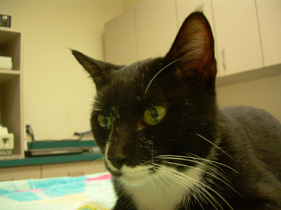 |
They took him to Norm Griggs, DVM, an experienced semi-retired veterinarian with surgical expertise, who was both surprised and horrified by the poor cat's experience. He fixed him up and called him Lucky since the arrow had bypassed several major organs, amazingly going between them instead of through them, except his lung and liver, which Dr. Griggs sewed up and fixed after carefully removing the arrow.
After surgery recovery, a local shelter took him and renamed him Arrow, and there he sat for a few months. :-( Dr. Griggs blogged about him, my friend was touched by his story, and I was sure I had finally found the cat I had been looking for. I made arrangements with my friend to help take him to me, and the shelter to get him, donated to the shelter (and still ask people to donate to them in Charlie's name).
I asked a lot of people for advice on a good name, something that was positive and unique. A local Atlanta artist, Randy Bienek, was interested in his story (and has since painted his portrait and features him in her various artist products) and came up with a name I thought was perfect -- Second Chance Charlie.
Charlie is a forever cat much loved in our home now and of course like all of our cats, 100% indoors. Charlie and I go various places, mostly cat shows, to spread the word about animal cruelty, and have since found a wonderful place in Atlanta that rehabilitates victims of animal cruelty, and ask people to donate there as well.
(The photo of Charlie here is copyrighted by Norm Griggs, do not copy. You will find the page of Second Chance Charlie by clicking here.)
5. Cruelty to cats is unfortunately all too common. Have you noticed some trend here?
I'm not an expert on the numbers involved with animal cruelty, but I do know that people who torture animals as children or young adults often become serial killers later in life. I think it takes a psychopath or sociopath to do those things to animals. Some people abuse animals by hoarding, which is a mental illness and very sad for everyone involved. I have links on Charlie's page that discuss these things in more detail and show people how to help stop it and how to help the victims of animal cruelty to recover.
6. How do you think legislation might help to handle cruelty to animals? Are the punishments severe enough?
I think in most cases the laws in place are quite good enough. It's the enforcement of those laws that is lacking. In some cases, the punishments are not severe enough, and many good people are working on that.
7. How do you educate the general public about cruelty to animals?
As I can, I go to cat shows or other events where cats are allowed and I have a poster that tells about Charlie and I have him there on exhibition, and in the cat shows, he competes. He is a TICA Master now - the equivalent of a Champion for a neutered cat. Of course Charlie is neutered, he came to me that way (I firmly believe in spay/neuter). If a club or event management wanted us to make an appearance somewhere, we would only need travel and hotel costs covered and we are happy to go anywhere in the world Charlie is allowed to go. I am an experienced public speaker and can speak on many topics on cat health, about Charlie, etc.
8. How do unneutered cats add to the problem?
In the case of animal hoarders it is more obvious. They tend not to neuter their cats, and they multiply beyond reasonable numbers (an elusive thing at best, as some people can lovingly care for 20 cats and some people can't take proper care of even one cat).
As far as rescue is concerned, the number one problem with unwanted cats today is not enough spay/neuter being done by pet owners. And that is a matter of money, which especially lately with the economic problems is very often the deciding factor. The more money Animal Control and local and state governments put into low cost or free spay/neuter programs, the less money they have to spend on the shelters, housing, feeding and caring for unwanted animals. There is a new movement spreading across the nation, I am happy to say, that I also try to tell people about. The No Kill Nation is making progress, even with shelters that have had extremely high kill rates, in rural areas and large cities, progress is being made.
9. Is there a way people could help the Atlanta Abyssinian Rescue's work?
Link to the three web pages associated with it so more people know about it. I have a small in-home foster care, so I don't need help with the animals that make their way here from time to time. I usually have none, sometimes one. Most of the time I spread the word about purebred Abyssinians available all over North America, and keep a state by state listing of them. They often need special care or one pet homes and are hard to place despite their loving personalities and beauty.
10. What advice would you give to anyone interested in cat rescue work?
Don't do more than you can sustain long term. A huge effort all at once and then nothing when you burn out on it often can be worse than a little here and there as you can, because others start to depend on you doing all of that work. And then you can't help any more and people and animals are left trying to figure out other solutions. It's very common to overdo and burn out in any charitable volunteer work. Take it a little at a time and say no to things you can't do. You can't do it all, it's not possible. So do what you can. If a lot of people do what they can long term, a whole lot can be accomplished.
11. Can you tell about the No Kill Nation movement?
Nathan Winograd has written two books about it that describe it in more detail, and I encourage everyone to read them. They will open your eyes to conditions in shelters and ways to make things better for the helpless animals in them. Basically, there is a plan that any shelter can follow, that decreases costs, and increases adoptions, and drastically reduces kill rates. A no kill shelter does humanely euthanize an animal who is suffering, like any responsible pet owner does. But any adoptable animal who isn't a danger to humans or suffering with an illness, gets adopted out.
12. What is your advice to anyone who knows about a situation where a cat is clearly mistreated? What should they do?
First make sure you understand the situation properly, that it really is mistreatment of an animal. Talk to the owner of the animal, perhaps even help them if they need it. They might have become ill and need help caring for the animal temporarily or to place the animal more permanently. Then if you are sure it is a case of cruelty, call local Animal Control. Repeatedly, if necessary. Go to the Animal Control or even the Sheriff's office if you need to. Document it with photos that are obvious on the where and what. Be ready to go to court and testify if needed.
Do you wish to send a message to Susan?
Do you have something to say to Susan Graham of Atlanta Abyssinian Rescue?

Leena's Books
Tutankhamun
|
This book travels with the King Tut - Treasures of the Golden Pharaoh exhibition on his world tour of ten cities from March 2018 onwards |
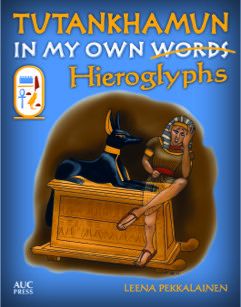 |
|
Tutankhamun: In My Own Hieroglyphs tells the story, for older children, of the life and afterlife of the famous young pharaoh in his own words. Tutankhamun tells us about the trouble he got into as a child in Akhenaten's palace in the new city of Akhetaten, and how he became a boy pharaoh. As we learn, his life changed a lot when he died as a teenager, and long years of boredom started in his tomb with only his pet monkey Fingers and his treasure for company. He did meet some of the Egyptian gods, of course, and had fun scaring off tomb robbers, but it was mostly rather dull. Then one day, some new and strange people, including a Mr. Howard Carter, arrived and began to take all the treasures out of his royal tomb. Fortunately, through the eyes of his beautiful golden mask, Tutankhamun, could have fun again traveling around the world |
Mr Mummific
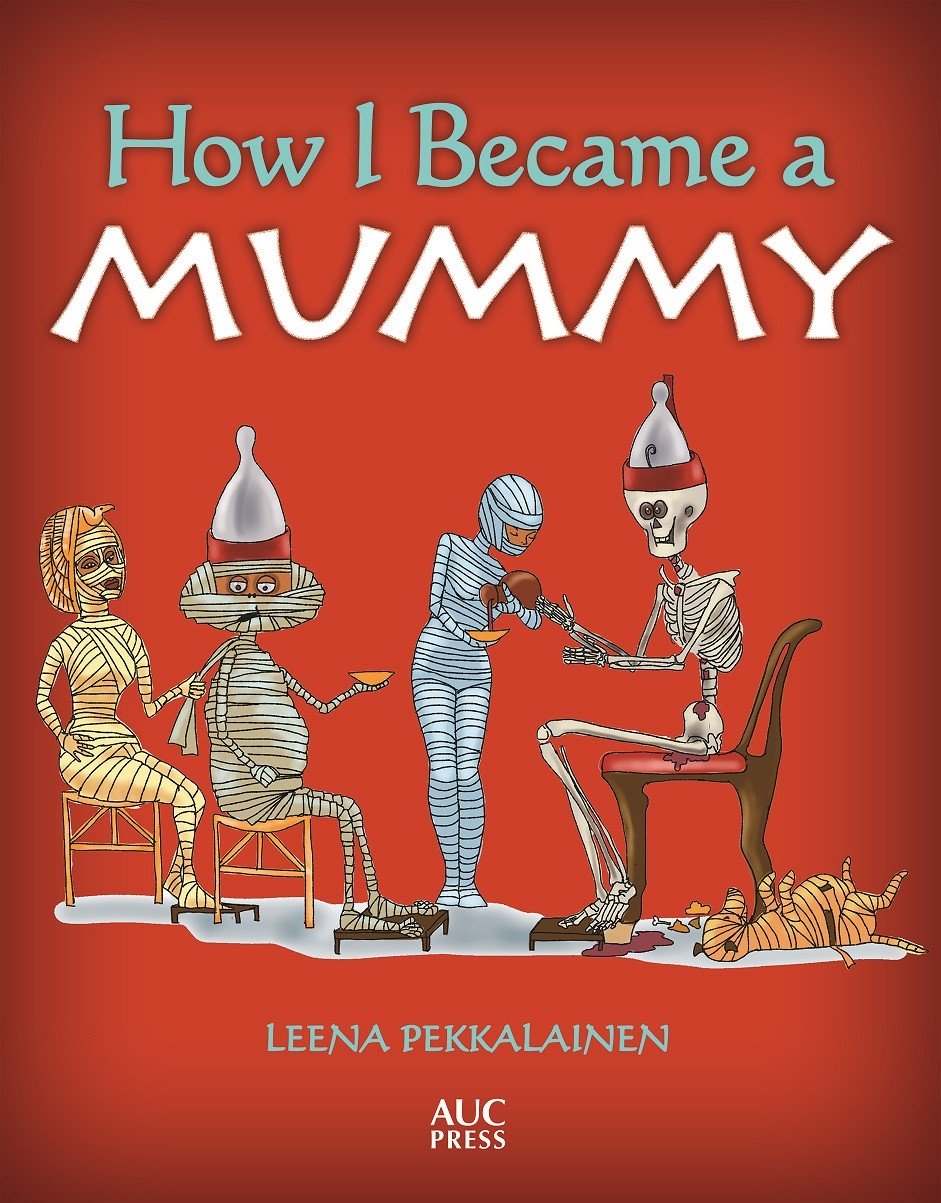
|
An ancient friend of mine, Mr Mummific dictated a book about how he became a mummy - and I was his scribe and artist. The book is available at Amazon.com and Amazon.co.uk On my other website www.ancientagypt101.com he continues his stories about life in ancient Egypt. |
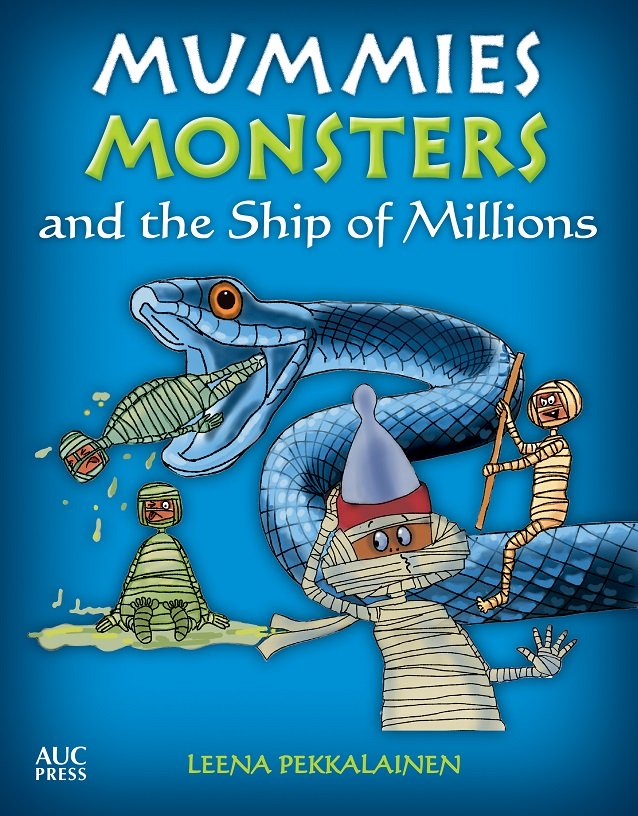
|
Another hilarious adventure for children with Mr Mummific, the mummy with attitude. He now tells the story of his mishaps, misunderstandings and misadventures as he leaves his tomb through the False Door to embark on the complicated and dangerous journey to the Afterlife aboard the magnificent Ship of Millions. Find the book at Amazon.com and Amazon.co.uk |
The Nephilim Quest Series
The first book in an epic fantasy series based on human mythology. The search for the mythical Watchers, the angels who fathered the Nephilim, the half-angels. A story that moves on three levels - our times, ancient Greece and ancient Egypt.
Preview Nephlim Quest 1: Shadowhunter online
***
My Author Website at leenasbooks.com
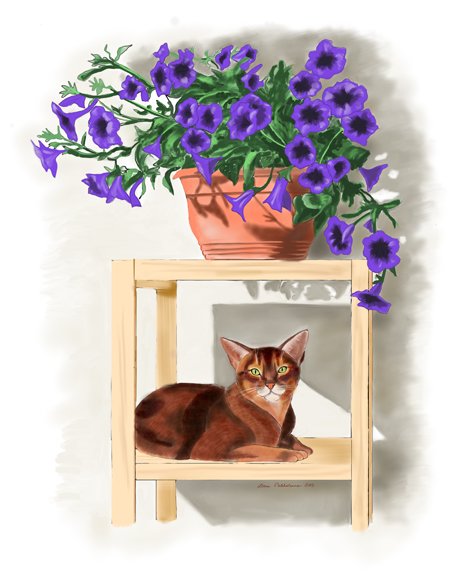
If you are looking for demanding coloring, check:
Online Coloring Books Magazine - No.1
It shows you step by step how to color this pretty Abyssinian cat with flowers. Each page has a color sample, and all the techniques are explained.
